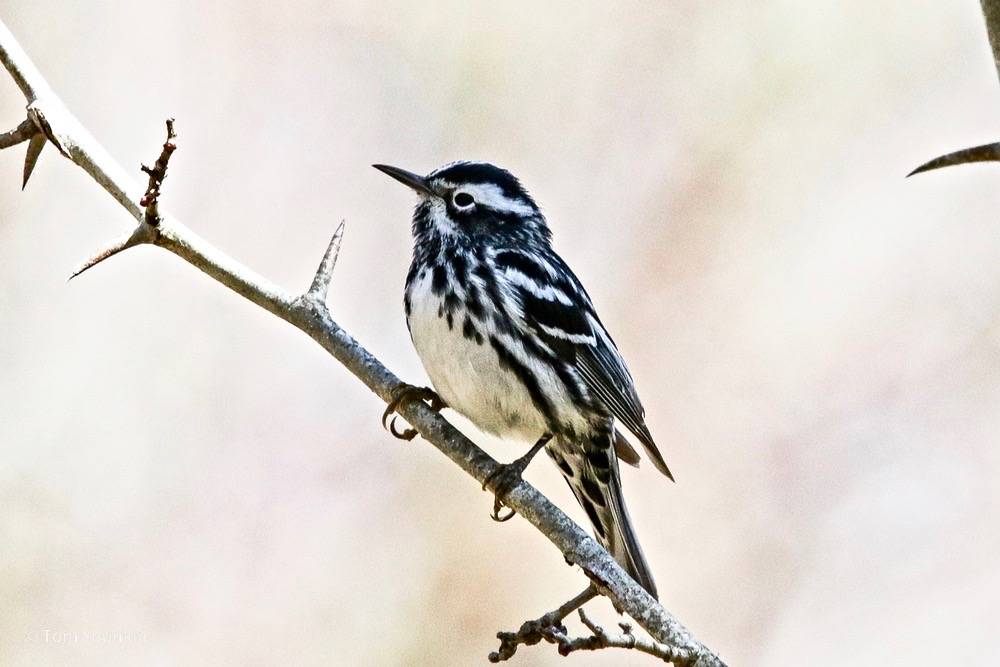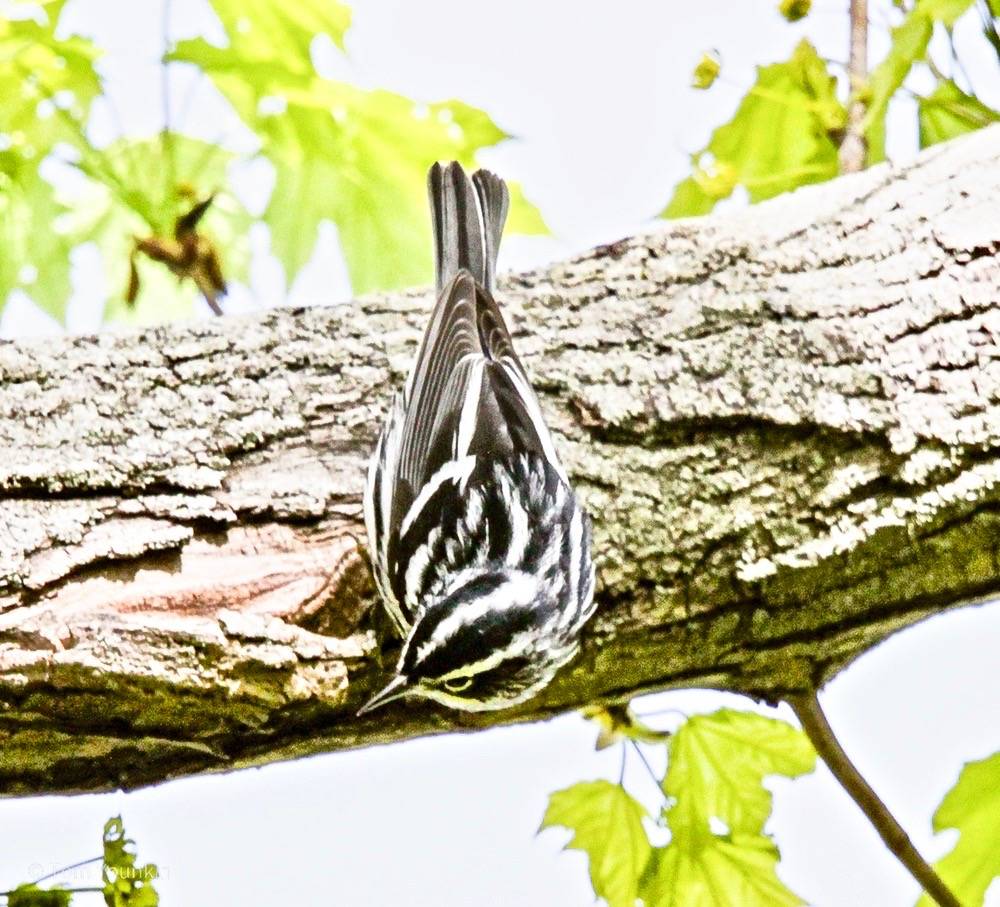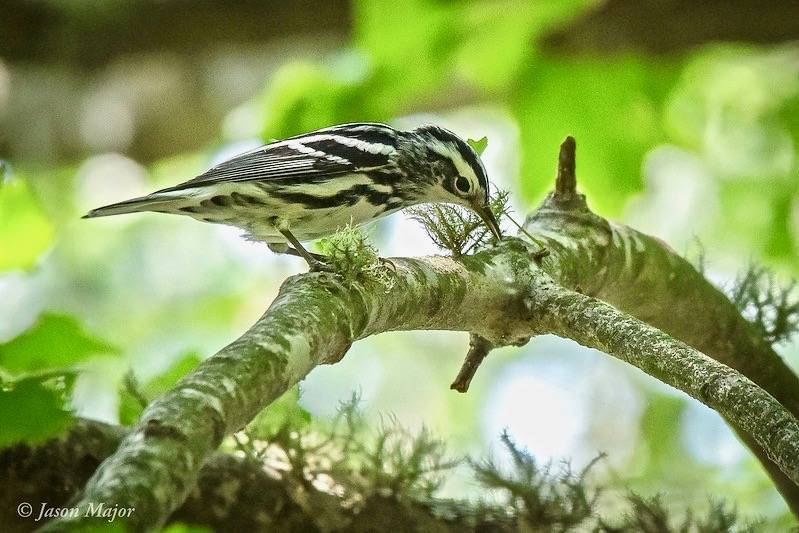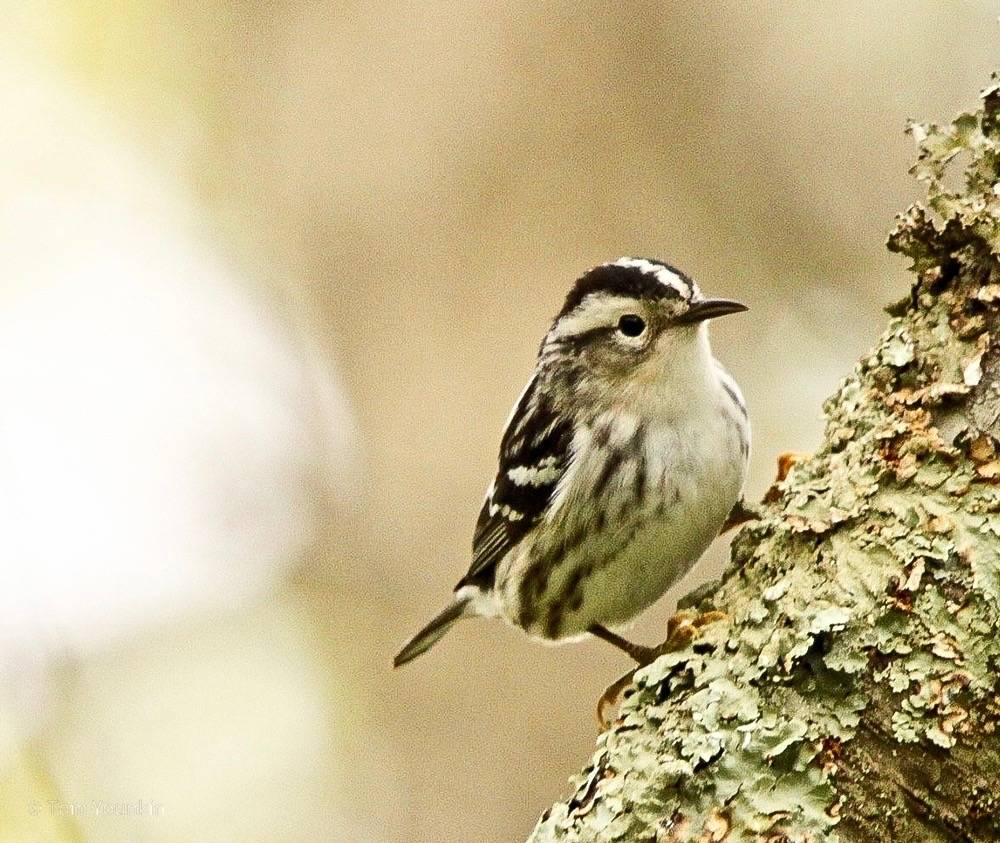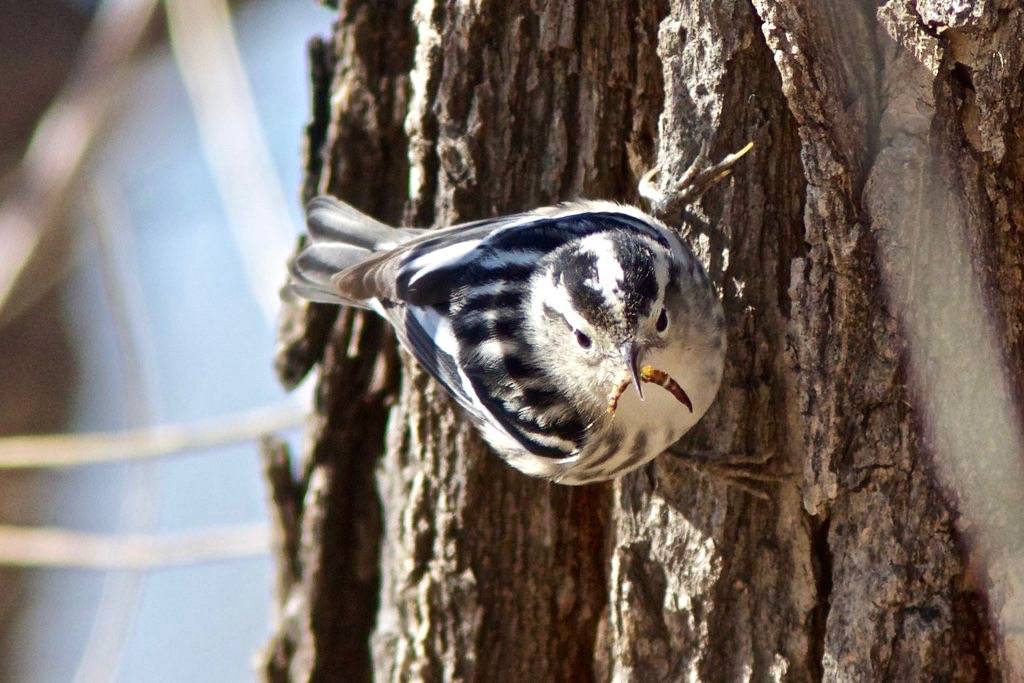Black-and-white Warbler
The Black-and-white Warbler has been seen foraging in tree branches along both the Upland and Pond Trails at Salter Grove. It has been observed most often in early and mid-May at the height of spring migration.
More slender and smaller than a House Sparrow, the aptly named Black-and-white Warbler has a distinctive black and white plumage. It breeds throughout Canada and the eastern United States and winters in Florida, Central America, the West Indies, northern South America, and south to Peru. It has even been seen as a rare vagrant in Europe.
Unlike other warblers, it has an especially long hind claw that enables it to creep along tree trunks or large branches like a White-breasted Nuthatch. Its slightly down-curved bill aids in probing tree bark for insects such as bark beetles, click beetles or wood borers. Its feeding habit thus eliminates insects that are harmful to trees. Various caterpillars including those of gypsy moths, ants, flies, leafhoppers, and spiders are also consumed.

